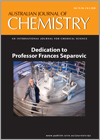
Australian Journal of Chemistry
Volume 73 Numbers 2 & 3 2020
Dedication to Professor Frances Separovic
The foreword to this special issue of the Journal dedicated to Professor Frances Separovic provides an account of her distinguished career and her pioneering work in the field of NMR spectroscopy and biophysical chemistry.
CH19286How to Make the Invisible Women of STEM Visible
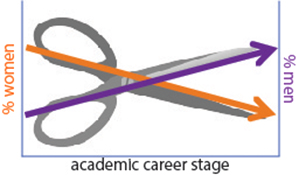
This paper reflects on the circumstances that can contribute to the notorious ‘scissor graph’ for the relative percentages of women and men in different career stages of STEM, and discusses what needs to change to overcome this ‘wicked’ problem.
CH19286 Abstract | CH19286 Full Text | CH19286PDF (108 KB) Open Access Article
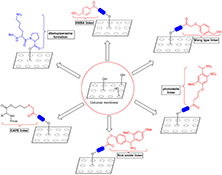
SPOT synthesis is one of the popular strategies to prepare peptide arrays. The critical factor for a successful SPOT synthesis is cellulose membrane modification and functionalization. Here, we highlight the current modifications of cellulose to facilitate SPOT synthesis and its contribution to the discovery of novel peptide mimetics and therapeutics.
CH19353The Fats of Life: Using Computational Chemistry to Characterise the Eukaryotic Cell Membrane
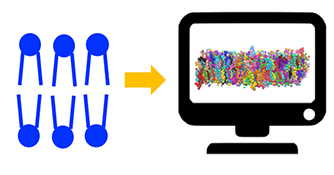
Molecular dynamics simulations have increased our understanding of the complexity of the cell membrane from that of a simple lipid barrier to a dynamic system containing hundreds of lipid species.
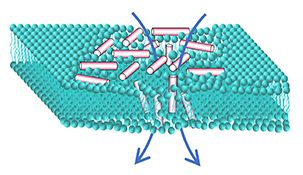
The molecular mechanism of lipid bilayer permeabilization by peptides remains enigmatic.
CH19409Force Measurement of Living Professional Phagocytes of the Immune System
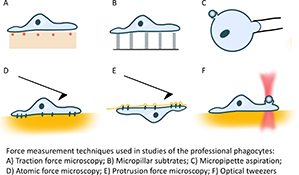
Phagocytosis is a mechanism of internalization of large particles, microorganisms, and cellular debris for intracellular degradation. The material can be up to several micrometres in size and therefore represents a significant mechanical undertaking on the part of the cell. Recent mechanical studies of cell-generated forces of phagocytes are the subject of this review.
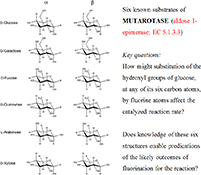
Mutarotase (aldose 1-epimerase; EC 5.1.3.3) catalyses the rapid exchange between the α- and β-anomers of d-glucose and some other monosaccharides. We summarise current knowledge of its involvement in metabolism, and its molecular mechanism. Its substrate specificity is considered in relation to fluorinated glucose analogues reported on in the following paper.
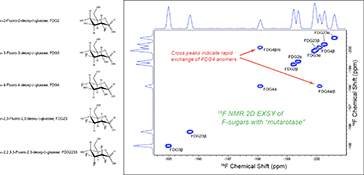
Two-dimensional exchange NMR spectroscopy detected rapid anomerisation of 4-fluoro-4-deoxy-d-glucose in the presence of the enzyme mutarotase. We measured the exchange rate constants and inhibition of this reaction by d-glucose and other fluorinated analogues. Implications for studies of the in situ kinetics of these glucose analogues in cells and tissues are discussed.
CH19227A Sesquiterpene Isonitrile with a New Tricyclic Skeleton from the Indo-Pacific Nudibranch Phyllidiella pustulosa: Spectroscopic and Computational Studies
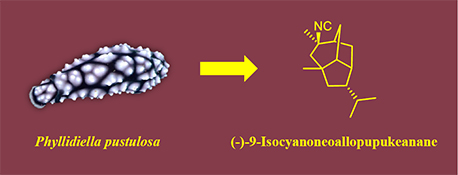
9-Isocyanoneoallopupukeanane 1, a novel tricyclic sesquiterpene isonitrile possessing a unique tricyclo[5.2.1.04,8]decane skeleton, was isolated from the Indo-Pacific nudibranch Phyllidiella pustulosa. The structure of 1 was investigated by NMR experiments together with molecular modelling studies and density functional calculations. The viability of a biosynthetic pathway leading to 1 is presented, and 1 exhibited micromolar antimalarial activity towards Plasmodium falciparum infected erythrocytes.
CH19326Incorporation of Vanadium and Molybdenum into Yttrium-Arsenotungstates Supported by Amino Acid Ligands
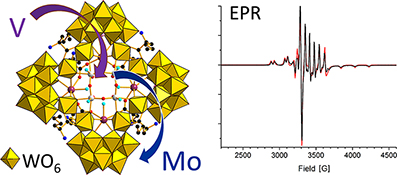
Vanadium(iv) ions are site-selectively incorporated into a family of yttrium-arsenotungstates with amino acid ligands. The vanadium(iv) ions occupy metal sites in the oxo-bridged tetrametallic core of the polyoxometalate, in preference to molybdenum(v).
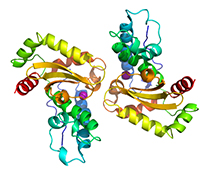
Superoxide dismutase (SOD) is an almost ubiquitous metalloenzyme that catalyses the disproportionation of superoxide (O2•−) to molecular oxygen (O2) and hydrogen peroxide (H2O2). The crystal structure of the manganese SOD from Geobacillus stearothermophilus was determined many years ago but the final structure, completed with modern processing and analysis tools, has only just been made available.
CH19359Microfluidic Synthesis of Rifampicin Loaded PLGA Nanoparticles and the Effect of Formulation on their Physical and Antibacterial Properties
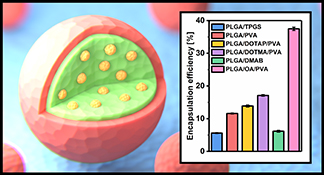
Rifampicin loaded PLGA nanoparticles were synthesised using a microfluidic assisted nanoprecipitation method. The effects of stabiliser and lipid additives on nanoparticle morphology, drug encapsulation efficiency, release kinetics, and antimicrobial activity are explored.
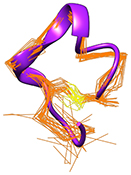
As an eminent ambassador of STEM and renowned NMR spectroscopist, Frances Separovic is an internationally famous name, but could it also be a valuable membrane-active peptide sequence? Frances’ name has been used as an amino acid sequence (FS), and its structure in micelles and whether FS is interacting with neutral anionic lipid bilayers were investigated using Frances’ favourite biophysical technique, NMR spectroscopy.
CH19308Excitonic Processes in a Conjugated Polyelectrolyte Complex
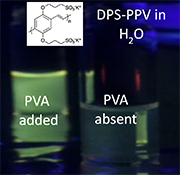
Addition of poly(vinyl alcohol) (PVA) to aqueous solutions of the conjugated polyelectrolyte DPS-PPV ‘turns on’ fluorescence intensity due to complexation and associated changes in DPS-PPV conformation.
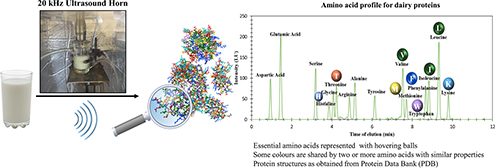
Ultrasound is heavily used in food processing. This study reports on the amino acid and secondary structure integrity of sonicated milk proteins.
CH19361What are the Potential Sites of DNA Attack by N-Acetyl-p-benzoquinone Imine (NAPQI)?
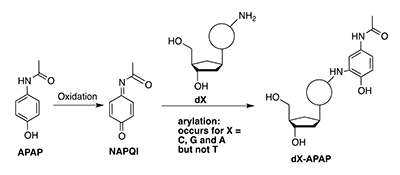
N-Acetylbenzoquinone imine (NAPQI), the electrophilic metabolite of paracetamol (APAP), reacts with deoxyguanosine (dG), deoxyadenosine (dA), and deoxycytidine (dC) but not deoxythymidine (dT) to form covalent adducts as evidenced by LC-MS experiments.
CH19423A Visible Light Photoredox Catalysed Radical Pictet-Spengler Reaction

The discovery of a reaction methodology enabling a radical variant of the classical Pictet–Spengler reaction is reported. This strategy furnishes tetrahydroisoquinoline derivatives bearing electron poor and electron rich substituents via photoredox catalysis. The reaction proceeds at room temperature, with blue-light irradiation and with excellent regioselectivity for the 6-endo intramolecular cyclisation.
CH19500The Effect of Charge on Melittin-Induced Changes in Membrane Structure and Morphology
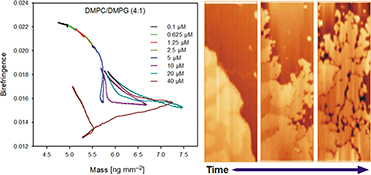
The binding of melittin to different phospholipid bilayers was studied using dual polarisation interferometry and atomic force microscopy. Melittin caused significant disruption on all bilayers, but the results demonstrate that membrane disruption follows distinct structural changes for different lipid mixtures irrespective of the strength of binding to the membrane surface.
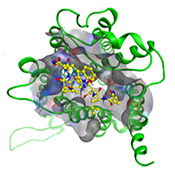
The supply of fuel for flight of the fruit fly pest is regulated by the adipokinetic hormone (AKH), Phote-HrTH. Thus, its receptor is a suitable target for the development of eco-friendly pesticides. In this paper we report the solution structure of the hormone and receptor. Docking and identification of the ligand binding site is reported.
CH19526Syntheses and Binding Testing of N1-Alkylamino-Substituted 2-Aminobenzimidazole Analogues Targeting the Hepatitis C Virus Internal Ribosome Entry Site

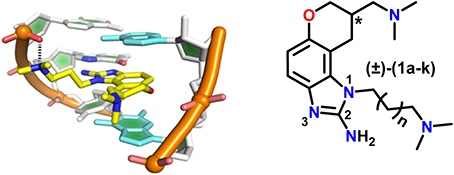
A class of 2-aminobenzimidazole analogues that target the IRES of the HCV-RNA have been synthesised and tested against binding correlated with in silico docking experiments. Analogues showed promising SAR to an HCV RNA-IRES construct (EC50: 21-89 µM). These data provide initial information to propose future inhibitors for selective HCV RNA translation.
CH19600Switching On/Off the Intramolecular Hydrogen Bonding of 2-Methoxyphenol Conformers: An NMR Study
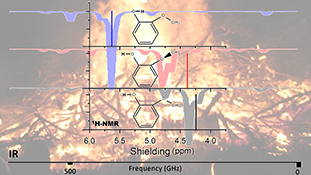
NMR spectroscopy is sensitive to the local hydrogen bonding interaction of a molecule. The hydrogen chemical shift of hydroxyl H is identified as the fingerprint of the anti–syn (AS) conformer of guaiacol.
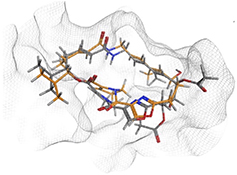
Proposed 3D conformations of Virginiamycin-14,16-diacetate in chloroform and methanol are shown and the implications discussed. The proposed structure of VM1-diAc in CDCl3 solution is similar to Virginiamycin M1 (VM1) binding to the ribosome, while in methanol, a protic medium, the proposed structure for VM1-diAc differs greatly from that of the VM1 binding to the 50s ribosome shown by X-ray crystallography.
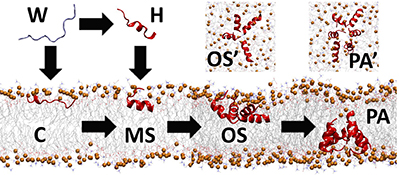
Our study suggests that lipid chemistry and membrane rigidity are key to preventing HSP1 from binding onto membranes, and the lipid headgroup charge may further promote peptide folding in the membrane. Our experiment-validated MD simulations suggest a carpet-like model mechanism for HSP1 through peptide binding, folding, aggregation, and assembly.
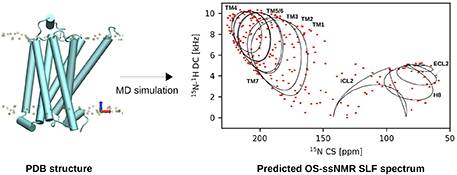
The feasibility of oriented sample solid-state NMR to resolve residue-specific structural details of multi-span membrane proteins was assessed using a separated local field spectrum predicted by molecular dynamics simulation.



